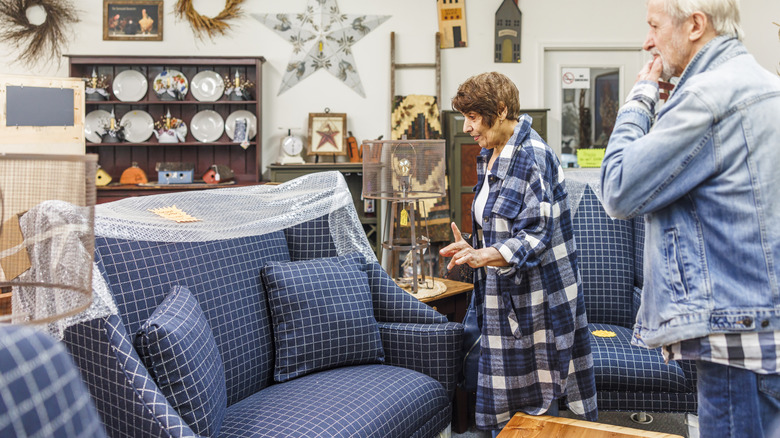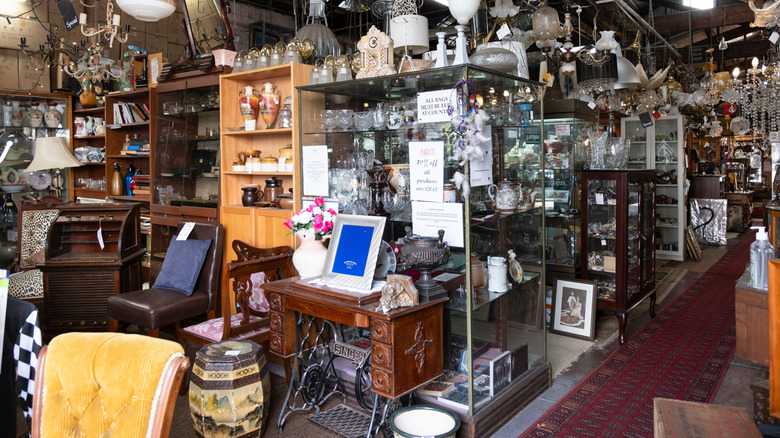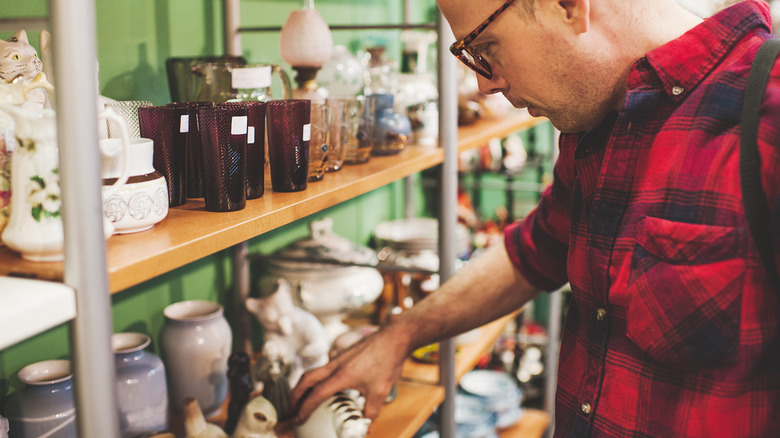Thrifting Terms You Have To Know To Be A Pro
Pro thrifters have a lot of tricks up their sleeves. They know the best days to go thrifting, how to tell if that antique lamp is really antique, and the most valuable items to seek out at the thrift store. But to get to shopping like a pro, you first need to start with the basics and get the hang of some terminology. It's time to stop using "antique" and "vintage" interchangeably and learn the actual definitions of antique, vintage, and modern.
On the surface, it makes sense why people treat "vintage" and "antique" like they mean the same thing. If you see a piece of furniture at the thrift store that looks like it's from any bygone era, calling it vintage or antique might just be your way of saying that it's stylishly old. But if sellers are using one of those terms (and using it correctly), they're giving you more specific information about the age of the item: antiques are over 100 years old, while vintage pieces are slightly newer, anywhere from 20 and 100 years old. In this context, modern items would be anything more contemporary than either of these classifications, in other words, made within the last 20 years.
What's the difference between vintage and antique?
The distinction between vintage and antique items is their age. It's only an antique if it's over a century old; for example, a Victorian-style dining chair from the late 19th century would be antique, but an Eames chair from the 1950s would be vintage. If the thrift store doesn't tell you the exact age of a piece but you want to make an educated guess about whether it's antique or vintage, there are a few things to keep an eye out for. The style of the furniture is an easy clue as to what era it's from — if you're looking at ornate Victorian styles that were popular in the mid-19th century, that could potentially be an antique.
Pay attention to the materials the furniture is made of, too. Antiques are typically made out of high-quality materials like sturdy wood, while vintage pieces may use more contemporary materials like plastic or fiberglass. If you can find any manufacturer's marks on your furniture, even better — this can give you details on who made the item, where it was made, and most importantly, when it was made, so you'll know if it's an antique or just vintage. Some marks let you deduce age via common sense. If glassware says that it's microwave safe, it had to have been made after the invention of microwaves in the 1940s, which makes it vintage at the oldest.
What is modern, exactly?
In the context of thrifting, modern can mean a couple of things. It can be in reference to a specific aesthetic from the mid-20th century that features Scandinavian design roots, clean lines, and inspiration taken from modern art. But, ironically, something from the mid-20th century would then fall under the definition of vintage since it's within the range of 20 to 100 years old.
If we're talking about how old a thrifted item is, modern describes anything not old enough to feel like it's from a different era, typically 20 years old or newer. Anything modern that's made to look vintage or antique is categorized as retro. If you're looking for older pieces to add to your decor or resell for cash, modern items are probably lower on your radar. But if you're just looking to style some common thrift store items around your home, there's nothing wrong with skipping the vintage label and picking up something more contemporary, though there are some home items you should think twice before buying at a thrift store.


